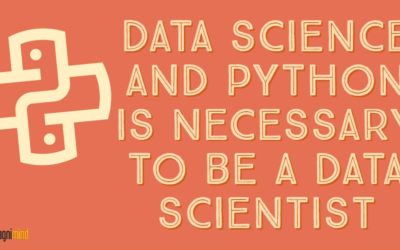In the domain of data science, Python and R are two of the most popular programming languages. If you handle big data, you may often wonder which one to use for data analysis, machine learning, or statistics. For a general approach to data science, Python with its readable syntax is more suitable. To handle statistical analysis, R is the preferred choice. If you want to work with big data and need to learn a programming language, you can learn either Python or R as both are great options. However, Python seems to have an edge due to certain reasons, which we’ll discuss shortly. To learn Python, you can join an online Python course in Silicon Valley or even a bootcamp if you want to fast-track your learning process.
Let’s dive in to check how Python and R stack up against each other.

Ease of use
As it’s a general-purpose language, Python is intuitive and easy to learn and apply. Since it has a relatively flat learning curve, you can write a program faster with it. This means you’ll need to invest less time to code and can have fun playing around with it. Additionally, Python supports good test coverage, thanks to its integrated testing framework that has a low barrier to entry.
R has a steep learning curve, especially at the beginning. However, if you don’t have any programming background or coding experience, R could be easier to learn. Due to poorly written code, you could experience slow speed with R but you can improve its performance using several packages, such as Riposte, renjin and FastR, pqR, etc. There’s one problem though – finding the packages could be difficult and time-consuming if you aren’t familiar with R.

Ecosystem
Python has several libraries to support data science tasks, some of which are NumPy (to handle huge dimensional arrays), Matplotlib (that facilitates data visualizations), Seaborn (to draw informative and eye-catching statistical graphics in Python), and Pandas (used for data manipulation and analysis). When you want to deploy machine learning at a large scale or build data science workflows, Python is a great choice. Using Python’s suite of specialized machine learning and deep learning libraries and tools like scikit-learn, TensorFlow, PyTorch, and Keras, you can build sophisticated data models that can be plugged directly into a production system. You can even use Jupyter Notebooks for sharing documents containing your live Python code, data science explanations, visualizations, and equations easily.
R provides you with a rich ecosystem of cutting-edge packages and boasts of an active community. You can find R packages at Github, BioConductor and CRAN. You can use R documentation to scan through all R packages available at these sources. R packages are collections of R functions, compiled code, and data, which you can install in R with a single line. Using these packages, you can string your workflows together, which can be particularly helpful for data analysis.

Final words
R has been designed for data analysis and statistics while Python is a multi-purpose language suited for different data science tasks, including, big data,machine learning, and AI. The focus of Python is on deployment and production. Thus, the choice between Python and R would depend on what goals you want to achieve – production and deployment or statistical analysis.
. . .
To learn more about data science, click here and read our another article.



